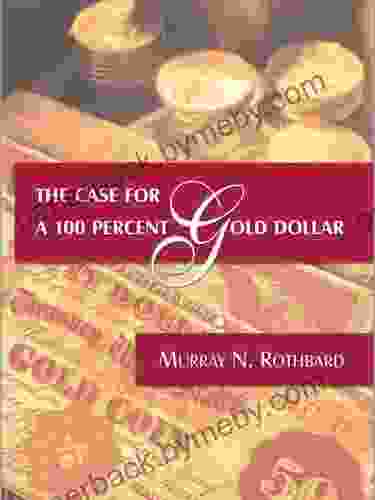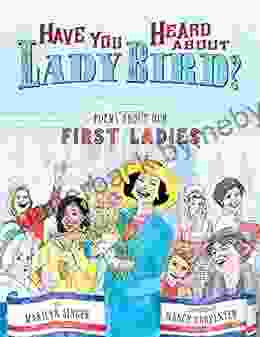Unlocking Financial Stability: The Case for 100 Percent Gold Dollar

In the ever-evolving realm of finance, the question of monetary stability remains at the forefront of economic discourse. Amidst the complexities of our modern financial system, many experts advocate for a return to a simpler, more secure foundation: the 100 percent gold dollar. This comprehensive article delves into the compelling arguments presented in the groundbreaking book "The Case for 100 Percent Gold Dollar," exploring the transformative potential of this monetary paradigm shift.
At the crux of the argument for a gold-backed dollar lies the volatility inherent in fiat currencies. Unbacked by any physical asset, the value of fiat currencies is subject to the whims of monetary policy, economic fluctuations, and political instability. As governments resort to quantitative easing and deficit spending, the purchasing power of fiat currencies erodes, leading to inflation and a loss of trust in the monetary system.
In contrast to the volatility of fiat currencies, gold has proven to be a reliable store of value for centuries. Its scarcity, durability, and universal recognition make it an ideal medium of exchange and a safe haven asset during times of uncertainty. Unlike fiat currencies, which can be inflated at will, the supply of gold is limited, ensuring its long-term purchasing power.
4.2 out of 5
| Language | : | English |
| File size | : | 225 KB |
| Text-to-Speech | : | Enabled |
| Screen Reader | : | Supported |
| Enhanced typesetting | : | Enabled |
| Word Wise | : | Enabled |
| Print length | : | 75 pages |
| Lending | : | Enabled |
Throughout history, economies anchored by gold have experienced greater stability and prosperity. From the gold standard era of the 19th century to the post-World War II Bretton Woods system, gold-backed currencies have fostered economic growth, low inflation, and a sound monetary environment. By eliminating the temptation for governments to manipulate the money supply, a gold standard promotes fiscal discipline and responsible economic policies.
One of the key concerns often raised against a gold standard is its potential to constrain economic growth and lead to deflation. However, historical evidence suggests that this is not necessarily the case. During the gold standard era, economies experienced periods of both expansion and contraction, but the overall trend was one of sustained growth. Furthermore, the limited supply of gold acts as a natural check against excessive inflation, ensuring that prices remain relatively stable over the long term.
In a 100 percent gold dollar system, the role of central banks would be significantly reduced. Instead of managing the money supply through interest rate manipulation and quantitative easing, central banks would focus primarily on maintaining the gold standard and ensuring the stability of the financial system. This shift would limit the ability of governments to engage in inflationary policies and would promote a more independent and transparent monetary framework.
While the arguments for a gold-backed dollar are compelling, practical concerns must be addressed. One concern is the potential for gold manipulation or hoarding, which could disrupt the stability of the system. However, robust safeguards and market mechanisms can be implemented to mitigate these risks. Additionally, the adoption of fractional reserve banking, where banks hold only a fraction of their deposits in gold, can help accommodate economic growth without requiring a proportional increase in the gold supply.
The implementation of a 100 percent gold dollar would require international cooperation and coordination. A global agreement on the gold price, exchange rates, and the rules governing the system would be necessary to ensure its stability and widespread adoption. However, the potential benefits of a sound and universally accepted monetary system would outweigh the challenges associated with international cooperation.
The case for a 100 percent gold dollar is a compelling one, offering a path towards greater financial stability, reduced inflation, and increased economic freedom. By eliminating the volatility inherent in fiat currencies and anchoring the value of money in a tangible asset, a gold standard can provide a solid foundation for sustained economic growth and prosperity. As we navigate an increasingly complex and uncertain financial landscape, it is imperative that we consider the transformative potential of a return to sound monetary principles.
Embrace the transformative potential of the 100 percent gold dollar by reading "The Case for 100 Percent Gold Dollar." This groundbreaking book provides an in-depth analysis of the arguments for a gold standard, offering a roadmap for a more stable and prosperous future. Together, we can advocate for a monetary system that protects our wealth, preserves our economic freedom, and secures a brighter tomorrow for generations to come.
- Alt Text 1: A close-up image of a gold coin, symbolizing the stability and purchasing power of gold.
- Alt Text 2: A graph showing the historical inflation rate of fiat currencies, highlighting their volatility and tendency to lose value over time.
- Alt Text 3: An image of a central bank building, representing the potential reduction in central bank power under a gold standard.
- Alt Text 4: A group of people from different countries holding hands, symbolizing the need for international cooperation in implementing a global gold standard.
4.2 out of 5
| Language | : | English |
| File size | : | 225 KB |
| Text-to-Speech | : | Enabled |
| Screen Reader | : | Supported |
| Enhanced typesetting | : | Enabled |
| Word Wise | : | Enabled |
| Print length | : | 75 pages |
| Lending | : | Enabled |
Do you want to contribute by writing guest posts on this blog?
Please contact us and send us a resume of previous articles that you have written.
 Book
Book Novel
Novel Page
Page Chapter
Chapter Text
Text Story
Story Genre
Genre Reader
Reader Library
Library Paperback
Paperback E-book
E-book Magazine
Magazine Newspaper
Newspaper Paragraph
Paragraph Sentence
Sentence Bookmark
Bookmark Shelf
Shelf Glossary
Glossary Bibliography
Bibliography Foreword
Foreword Preface
Preface Synopsis
Synopsis Annotation
Annotation Footnote
Footnote Manuscript
Manuscript Scroll
Scroll Codex
Codex Tome
Tome Bestseller
Bestseller Classics
Classics Library card
Library card Narrative
Narrative Biography
Biography Autobiography
Autobiography Memoir
Memoir Reference
Reference Encyclopedia
Encyclopedia Kirstin Dow
Kirstin Dow Phil G Tang
Phil G Tang Ken Venturi
Ken Venturi Olga Baranova
Olga Baranova Kevin Bupp
Kevin Bupp Programming Languages Academy
Programming Languages Academy Kerri Maniscalco
Kerri Maniscalco Lee Jackson
Lee Jackson Peter Lane
Peter Lane Laila Ibrahim
Laila Ibrahim Kevin Milton
Kevin Milton William Esper
William Esper Kim Heacox
Kim Heacox Seabury Blair
Seabury Blair Ken Shamrock
Ken Shamrock Ron Miner
Ron Miner H Bruce Franklin
H Bruce Franklin Nicholas Marsh
Nicholas Marsh Khenchen Thrangu
Khenchen Thrangu Major T Benton
Major T Benton
Light bulbAdvertise smarter! Our strategic ad space ensures maximum exposure. Reserve your spot today!

 Russell MitchellGateway to the Himalayas: Discover the Enchanting Charms of Himachal Pradesh
Russell MitchellGateway to the Himalayas: Discover the Enchanting Charms of Himachal Pradesh Ivan TurgenevFollow ·13.9k
Ivan TurgenevFollow ·13.9k J.D. SalingerFollow ·15.1k
J.D. SalingerFollow ·15.1k Bruce SnyderFollow ·3.1k
Bruce SnyderFollow ·3.1k Vladimir NabokovFollow ·4.6k
Vladimir NabokovFollow ·4.6k Henry Wadsworth LongfellowFollow ·14.2k
Henry Wadsworth LongfellowFollow ·14.2k Adrien BlairFollow ·16.4k
Adrien BlairFollow ·16.4k José MartíFollow ·14.6k
José MartíFollow ·14.6k Dakota PowellFollow ·2k
Dakota PowellFollow ·2k

 Isaac Asimov
Isaac AsimovEmbark on an Epic Adventure: The Colorado Trail 9th...
Unveiling the Treasures of the Colorado...

 Clinton Reed
Clinton ReedUltimate Football Heroes: Uncover the Gridiron Greatness...
Enter the World...

 Ibrahim Blair
Ibrahim BlairUnveiling the Secrets of Stolen Focus: A Journey to...
In today's relentless digital...

 Colt Simmons
Colt SimmonsRediscover the Founding Father's Vision: Thomas Jefferson...
Immerse Yourself in the Unedited Words of...

 Juan Butler
Juan ButlerExcel in Language Learning: The Ultimate Self-Study...
Unlock Your Language Potential with Our...
4.2 out of 5
| Language | : | English |
| File size | : | 225 KB |
| Text-to-Speech | : | Enabled |
| Screen Reader | : | Supported |
| Enhanced typesetting | : | Enabled |
| Word Wise | : | Enabled |
| Print length | : | 75 pages |
| Lending | : | Enabled |












